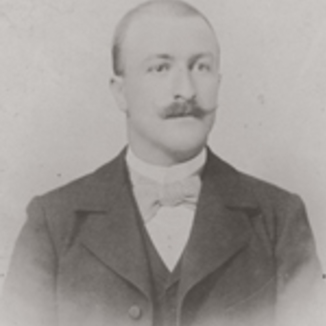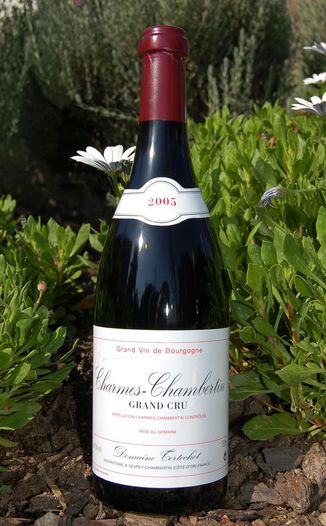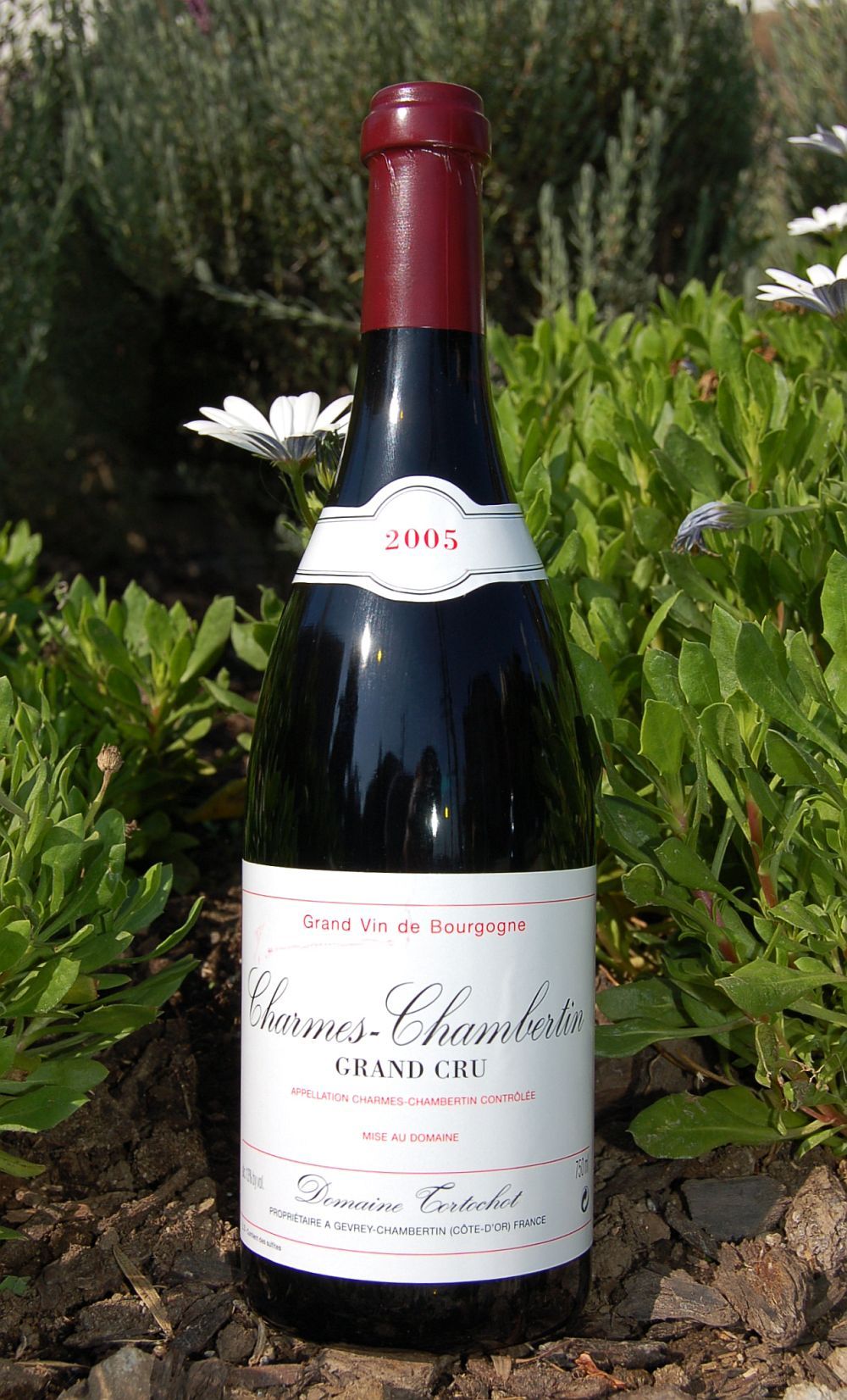What We Say 2005 Charmes-Chambertin Grand Cru
EXCLUSIVE SUPERIOR WINE ALERT:
Today’s international selection is very exclusive and also an exceptional wine from one of the best vintages in recent years in Burgundy. Be sure to place your order early and if we sell out, we will have another exceptional Burgundy on deck through the remainder of the day.
SECRET SAVINGS ALERT:
Subscribe to our Daily Dispatch (above) and you’ll always know what our Top Secret coupon code of the day is. Every day we issue a new members-only code that entitles you to have Ground Shipping included on orders of six or more and, sometimes, an added discount!
Mission Codename: Grand Traditions
Operative: Agent White
Objective: Secure a very special Grand Cru Burgundy in honor of Thanksgiving Day
Mission Status: Accomplished!
Current Winery: Domaine Tortochot
Wine Subject: 2005 Charmes-Chambertin Grand Cru
Winemaker: Gabriel Tortochot
Backgrounder:
Charmes-Chambertin is one of the nine Grand Cru vineyards in the Gevrey-Chambertin region of the Cote de Nuits. Charmes-Chambertin is the largest of the vineyards and lies to the south of the region, just east of the Route des Grand Crus (N74). The southern most portion of the vineyard is now referred to as Mazoyeres. These wines are known for showcasing Pinot Noir in its most pure form with ripe fruit and soft and elegant but still solidly structured.
Wine Spies Tasting Profile:
Look – Deep and beautifully dark ruby red and burgundy with ruby and violet hues through its dark but clear core. Along the edges the color lightens slightly to a lighter ruby and when swirled, slow thin, but widely spaced legs creep down to the wine below.
Smell – Medium in intensity, this elegant wine shows deeply integrated aromas of red cherry, floral violets, subtle spice and a hint of bramble over a base of toasted oak, funky earthiness and subtle chalky minerality.
Feel – This full-bodied wine has a muscular framework but, does so with elegance. And iron fist in a velvet glove, perhaps. Dry with silky but firm tannins and bright but balanced acidity and exceptional minerality linger for an eternity into the finish.
Taste – Exceptionally pure Pinot Noir flavors of red fruit, including red cherry along with subtle spice and earthiness. A chalky minerality that is both felt and tasted lingers over the palate with layers of floral violet, herbal notes and oak. Sublime in its integration.
Finish – Exceptionally clean and long with a textural quality that clings to the palate, making the mouth water for another sip.
Conclusion – The 2005 Domaine Tortochot Charmes-Chambertin Grand Cru is a delicious and exceptional example of one of the world’s finest wine-growing regions. It is almost a shame to have tasted and reviewed this wine now, as its true potential lies a decade into the future. Finesse on the nose; bold and muscular, but not overbearing on the palate; elegance and purity in its flavors; and a finish that leaves you yearning for more. What else could you want? Allow this wine to open up and breathe for 30-60 minutes if enjoying it now, but if possible save a couple bottles for the future.
Mission Report:

Agent White on the Route des Grand Crus, France.
True identity concealed.
Below is a recap of Agent White’s and Blush’s recent visit to Burgundy.
… East Central France …
We began the day early as we wanted to hit the Route des Grand Crus with lots of time to enjoy the food and especially the wine. Zipping through the back roads from our safe house in Bar Sur Aube(south end of the Champagne region) to Dijon at this hour was fast but just outside of Dijon, we started to hit the normal business day traffic. Thankfully, the GPS devise in my handheld spy communicator quickly re-routed us around and soon we were headed south through some of the finest vineyards in all of Burgundy.
The N74, or Route de Dijon as its known officially but wine aficionados know this as the Route de Grand Crus. We slowed down and started taking it all in. The names of each commune and village familiar to anyone who has spent time in the French section of a good wine shop. The vineyards, this time of year, bare, with a slight fog resting in the lower valleys, and along the tops of the hills to the west. A slight drizzle fell creating an almost surreal experience as the fog and low clouds moved with the weather exposing and then rehiding these prized vineyards.
After our lunch in Beaune, Agent Blush and I had the chance to explore some of the smaller communes that overlooked the valley and in particular, the historic Gevrey-Chambertin with is many Grand and Premier Cru vineyards. Gevrey-Chambertin is located just a few miles south of Dijon. The wines from here are truly representative of the finesse and elegance that Burgundy is known for.
Quite simply, this is the life. While you may not have been able to join us on the Holiday in Beaune, today’s selection from Domaine Tortochot will at least give you a small bit of the flavor of the trip!
A votre sante!
Wine Spies Vineyard Check:
The approximate location of the Charmes-Chambertin can be seen in this satellite photo.
What the Winery Says
Domaine Tortochot


Awards & Accolades:
92 Points – Burghound.com – Discreet but not invisible wood frames a ripe nose of blue and red pinot fruit that offers up notes of natural spice, underbrush, earth and a hint of violets that dissolve into equally earthy, serious and intensely sauvage big-bodied flavors that culminate in a robust and muscled finish that delivers excellent length. This is a big Charmes. Indeed it could easily pass for a Mazoyènes 92/2017+.
About This Wine:
Charmes-Chambertin is one of these 9 Grands Crus. The vineyard is situated on a subsoil of marl, covered by a thin surface of scree and the finest silt. Brown chalky soil developed over these deposits. Surface area: 0,57 hectares.
This terroir produces a wine with lots of charm, and extraordinary notes of red fruit, licorice and leather. Its firm structure allows for a minimum of 10 years of ageing.
Nature of the soil: A shallow sea withdrew over 100 million years ago leaving a peneplain consisting of a horizontal pile of marine sediment deposited in the Jurassic period. After the erection of the Alpes, several faults were produced, one between Lyon and Dijon gave birth to the Côtes de Nuits and Beaune. The formation of the Côte, with its eastern exposure, brought the Jurassic era’s geology up to date.
The Combe de Lavaux would eventually form an impressive alluvial cone extending from the vineyard to the plain. On one side of this valley the Côte des Grands Crus may be found, extending almost all the way to Morey, with its nine esteemed wines. The soil is a brown calcareous soil.
About The Winery:
Origins: As far as one traces back family Tortochot, one found an ancestor, vine-grower in Gevrey.
In the last century, Paul, the Gabriel’s grandfather, was a small vine-grower residing on the Chestnuttree place.
His son, Félix, get married with Louise Liébaut from Morey. Liébaut’s Family is well-known in Morey, a variety of Pinot Noir is called so, after the ancestor Eugène had selected it. The Félix’s son, Gabriel owns around 10 hectares.
History: Gabriel Tortochot, a fervent defender of Burgundy’s wines, notably through his actions as president of the “Syndicat Viticole de Gevrey-Chambertin” and his role on the “Comité National de L’INAO”, has transmitted his passion for terroir of Gevrey-Chambertin to his two daugthers, Brigitte and Chantal.
This latter ensures continuity and perenniaty in the management and development of the Domain. A graduate in Oenologie, she belongs to the new generation of wine producers who whish to produce wines with a taste of their “terroir”.
Vineyard Management: Here cultivation and vinification are managed with the greatest respect for Burgundian traditions. Vineyard management is classic: low-trained vines, which are very densely planted. (10,000 vine plants/ha)
Pruning is one of the most important tasks. It determines future yields through the ratio of grape bunches per vine plant and foliage covering. Throughout the entire vegetative and productive cycle, the vine-grower must prune the vines. In May and June we remove whatever is growing near the trunk of the vine or we remove the twin buds on the fruiting cane making sure to leave no more than 7 to 8 bunches per vine stock. It is necessary to trellis the vine, returning several times to prune each vine plant. In July, trimming eliminates young shoots, which exhaust the sap. Eventually, green harvesting must be conducted to eliminate excess unripe grapes in order to ensure optimal ripeness of the remaining grapes.
Throughout the vegetative cycle, it is necessary to intervene in order to fight various parasites. Nowadays, rather than treat systematically, we have learned that it is better to observe and step in only if it proves to be necessary. As for controlling grape moths such as Cochylis and Eudemis, sexual confusion allows for very direct protection against these two parasites. Regular observation allows us to determine the risk of infestation by acarinas so that intervention only occurs when the threshold has been reached. In this way, a balance between acarinas phytophagous and their natural predators, typhlodromus, is re-established.
The Domain: In 2003 we began – with the assistance of specialists from the Chambre d’Agriculture (a local agricultural body) – a review of how the vineyard was run, with the objective of making our production methods more environmentally-friendly. We decided to begin to move towards organic viticulture.
In our test vineyard, les Corvées, we decided that we would do our utmost to try to only use products that are chemical-free.
We only use organic raw materials – copper salts, sulphates, and natural insecticides (made from plants). To protect vines from mildew and oidium (powdery mildew) we use sprays made from plant extracts and highly-diluted bouillie bordelaise (a copper sulphate pulp) as well as sulphur flowers in powder form.
Our aims are: to protect the natural ecosystem; to protect plant-life, animals and insects on the ground; to put more emphasis on the soil’s lifespan; and to ensure the survival of local flora and fauna.
The alternatives to using chemical weedkiller are ploughing, weeding and letting natural grass growth occur.
The resulting soil will be both more natural and more representative the vineyard’s unique local soil type. The vines’ roots will be forced to go deeper into the soil to feed and will benefit from its higher content in mineral salts.
Only bio-dynamic (our energised) composted organic material will be added to the soil.
Crafting The Wines: Once vineyard management has come to a successful conclusion, the harvest takes place when the official start date has been set. We try to acquire grapes that have reached the most desirable sugar/acid balance.
The grapes are manually harvested, having been previously sorted in the vineyard to eliminate those that are not perfectly healthy or sufficiently ripe. The grapes are then 100% destemmed as the stems, rarely very ripe, will not impart anything but astringent tannins.
The grapes are gently crushed in order to release the juice and encourage fermentation. The grapes are put into tanks then cooled down (between 14-15°C). Controlling the temperature allows for a pre-fermentation cold maceration for 4 to 5 days before fermentation starts.
Once fermentation has begun, we pump over at the end of each day and punch down the cap twice a day. The must is analysed in order to determine the alcohol level and acidity so as to carefully measure chaptalisation. Fermentation takes place without the addition of cultured yeast. Temperatures are supervised so that they reach no more than 32°, 33°C. Once fermentation has finished, devatting then pressing takes place. Free-run and press-juice are blended.
After letting the juice settle for 24 hours, the wine is transferred to the cellar where it is placed in new oak barrels, 100% for the Grands Crus, 50% for the Premier Crus and 25% for the village wines. We use a medium toast for the barrels so that the wood doesn’t dominate the wine.
Barrel Aging: Ageing in barrels allows for the constant exchange between the wine and the air thanks to the porous nature of the wood. This results in a slow oxidation which ages the wine, diminishes astringency and stabilizes the colour. Substances resulting from wood particles breaking down impart the wine with vanilla notes thereby enriching it.
Barrel ageing also encourages the development of sediment from the largest particles, ultimately facilitating racking. Malolactic fermentation takes place over the 15 to 18 month period of barrel ageing. The first racking takes place once malolactic fermentation is complete. This fermentation lowers the wine’s natural acidity and modifies the aromas. Since 1999, we no long fine or filter our wines. In order for this to be successful, the grapes must be perfectly ripe, free of rot and suspended pectin. Finally, the wines are bottled after 15-18 months of barrel ageing.
Technical Analysis:
Appellation: Charmes-Chambertin Grand Cru
Varietals: 100% Pinot Noir
Alcohol: 13%



